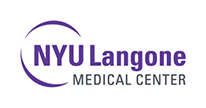Biceps Tenodesis
What is a Biceps Tendon Rupture?
The biceps muscle is present on the front side of your upper arm and functions to help you bend and rotate your arm.
The biceps tendon is a tough band of connective fibrous tissue that attaches your biceps muscle to the bones in your shoulder on one side and the elbow on the other side.
Overuse and injury can cause fraying of the biceps tendon and eventual rupture.
A biceps tendon rupture can either be partial, where it does not completely tear the tendon, or complete, where the biceps tendon completely splits in two and is torn away from the bone.
The biceps tendon can tear at the shoulder joint or elbow joint. Most biceps tendon ruptures occur at the shoulder and is referred to as proximal biceps tendon rupture. When it occurs at the elbow it is referred to as a distal biceps tendon rupture, however, this is less common.
What are the Causes of Bicep Tendon Rupture?
Biceps tendon ruptures occur most commonly from an injury, such as a fall on an outstretched arm, or from overuse of the muscle, either due to age or from repetitive overhead movements such as with tennis and swimming.
Biceps tendon ruptures are common in people over 60 who have developed chronic micro tears from degenerative changes and overuse. These micro tears weaken the tendon making it more susceptible to rupturing.
Other causes can include frequent lifting of heavy objects while at work, weightlifting, long term use of corticosteroid medications and smoking.
Symptoms of Bicep Tendon Rupture
The most common symptoms of a biceps tendon rupture include:
- Sudden, sharp pain in the upper arm
- Audible popping sound at the time of injury
- Pain, tenderness and weakness at the shoulder or elbow
- Trouble turning the arm palm up or down
- Bulge above the elbow (Popeye sign)
- Bruising to the upper arm
Treatment Options for Bicep Tendon Rupture
Non-surgical treatment is an option for patients whose injury is limited to the top of the biceps tendon, and may include rest, ice application, medications and physical therapy.
Surgery may be necessary for patients whose symptoms are not relieved by conservative measures and for patients who require full restoration of strength, such as athletes. Your surgeon may recommend surgical repair for proximal biceps tendon rupture in order to regain maximum upper arm strength in the following patients:
- Younger patients
- Athletic patients
- Patients concerned about the cosmetic appearance of the bulging bicep muscle, also referred to as “Popeye” sign.
Biceps Tenodesis
Biceps tenodesis is a surgery performed to repair a ruptured biceps tendon and may be performed arthroscopically. Arthroscopy is a surgical procedure in which an arthroscope, a narrow lighted tube with a camera, is inserted into the joint. The camera displays the image of the joint on a television screen, providing your surgeon a closer look at the joint.
Biceps tenodesis is performed under general anesthesia. The surgeon will make several small incisions, about ¼ inch each, to the shoulder area.
In one portal, the arthroscope is inserted to view the shoulder joint. Along with the arthroscope, a sterile solution is pumped into the joint which expands the shoulder joint, giving the surgeon a clear view and room to work. The other portal is used for the insertion of small surgical instruments. A surgical instrument is used to probe various parts within the joint to determine the extent of the problem.
Any bone spurs present that may have contributed to the rupture will be shaved with an instrument called a burr. The surgeon will locate the biceps tendon and debride (remove) any frayed edges that occurred from the rupture. The biceps tendon will then be attached to the humerus bone, the upper arm bone, as opposed to its original location on the labrum within the shoulder. The tendon is secured to the humerus with a special screw.
After treating the problem, the incisions are closed by suturing or tape.
Postoperative Care for Biceps Tenodesis
You will wake up in the recovery room and then be transferred back to the ward. A bandage will be around the operated shoulder and the shoulder placed in a soft sling. You will be encouraged to move your fingers and wrist often. Pain medication will be provided and should be taken as directed. It is normal for the shoulder to swell after the surgery. Placing ice-packs on the shoulder will help to reduce swelling.
Physical therapy will be ordered to restore normal upper arm function and strength. You will be able to drive when you are off pain medications and no longer in a sling, usually about 3 weeks. Eating a healthy diet and not smoking will promote healing.
Risks and Complications
As with any surgery, there are potential risks involved. The decision to proceed with the surgery is made because the advantages of surgery outweigh the potential disadvantages. Complications may include:
- Allergic reactions to medications
- Blood loss requiring transfusion with its low risk of disease transmission
- Heart attacks, strokes, kidney failure, pneumonia, bladder infections
- Complications from nerve blocks such as infection or nerve damage
- Serious medical problems can lead to ongoing health concerns, prolonged hospitalization, or rarely death
- Infection
- Nerve damage
- Reflex sympathetic dystrophy, which causes excessive pain





